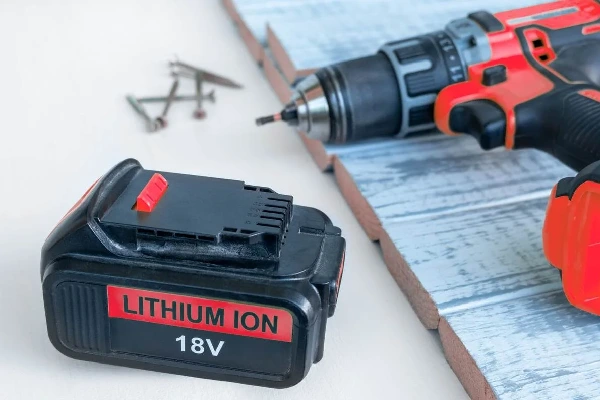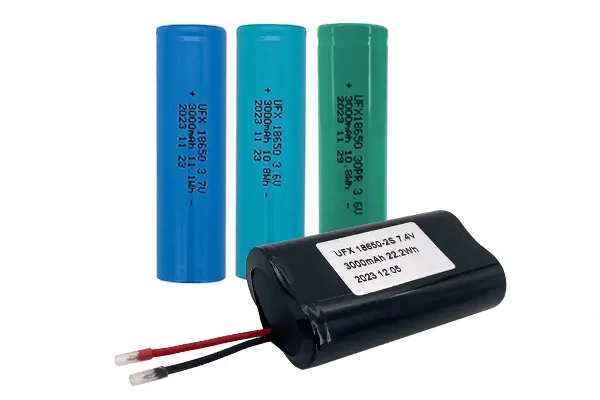In these days of DIY, an ever-present electric drill is a must-have for any number of home projects, including assembling furniture and hanging shelves. But the real muscle behind these handy tools is their electric drill batteries.
These rechargeable powerhouses give cordless drills their lifeblood, permitting them to take on tasks effortlessly. In this all-inclusive manual, you will get a deep dive into electric drill batteries with tips on optimally utilizing them for top-notch performance and long-lastingness.
Part 1. What are the electrical drill batteries?
Various types of electric drill batteries are available to cater to different preferences and peculiarities. The most basic kinds are nickel-cadmium (NiCd), Nickel-Metal Hydride (NiMH), and Lithium-Ion (Li-ion). NiCd batteries are known to be robust and capable of withstanding high discharge rates, thereby making them suitable for heavy-duty applications.
In comparison, NiMH batteries have a higher energy density and are environmentally friendly alternatives to NICD batteries.
On the other hand, Li-ion batteries are lighter, have no memory effect, and possess greater energy density; thus, modern cordless drills prefer them.
To maximize their performance and lifespan, it is important to understand the chemistry and construction of these batteries. NiCd and NiMH batteries can exhibit a memory effect that causes a loss in capacity over time if not fully discharged before recharging. Conversely, Li-ion batteries do not show this behavior; therefore, they can be charged regardless of the state of charge without any detrimental effects.
When choosing a cordless drill, consider its battery type, which depends on its use as well as whether it’s compatible with what you need it for. Factors such as voltage, capacity, and runtime should also be considered since they will impact how an electric drill performs.
Part 2. How to extend drill battery life?
1. Charge and discharge correctly
To elongate the life of your electric drill battery, you need to employ proper use and storage techniques. Among other factors that can shorten the lifespan of a battery is deep discharge, which can cause irreparable damage to cells. Instead, you should recharge it before it gets critically low to avoid over-discharge.
2. Store drill batteries correctly
Proper storage battery is also crucial for maintaining battery health. Keep batteries in a cool, dry place away from direct sunlight and extreme temperatures. You should not keep the batteries fully charged or completely discharged for long periods, which might result in capacity loss and premature aging.
3. Enhance performance
To ensure you get the best out of your electric drill battery, you should try highly sophisticated performance enhancement techniques such as optimizing usage patterns and avoiding high discharge rates. If no high-power settings are in use,n heat buildup will be reduced, and the batteries’ life will be extended this way. Besides, do not store discharged batteries over long periods since this may cause an irretrievable decline in their volume capabilities.
4. Invest in quality drill batteries
Improved performance and dependability also come with investing in quality batteries and chargers. When choosing these power sources, look for known and trusted names with warranties/ guarantees attached to them because they give peace of mind when one is buying them.
Part 3. How to charge the drill battery correctly?
Effective charging techniques are important in maximizing the performance and durability of an electric drill battery.
- Always use a charger of the manufacturer’s recommendation and avoid third-party chargers with incorrect voltage or current specifications.
- Overcharging could result in overheating, reducing battery life; hence, one should take out the batteries when fully charged.
- Some modern chargers incorporate intelligent charging algorithms that optimize the charging process for maximum efficiency and a longer battery life span. Take advantage of these features if your charger has them to be certain that your battery gets charged.
Part 4. Drill battery Maintenance Tips
It is important for you to regularly maintain your electric drill battery.
- You must check it occasionally for signs of damage like cracks, leaks, or corrosion on the contacts.
- Put a soft, dry cloth on the dirty parts of the contacts and rub them gently to remove any dirt or debris that can prevent good electrical contact.
- Besides physical maintenance, you must occasionally calibrate your battery to gain accurate readings about the state of charge. This process entails fully discharging and recharging your battery to reset its internal capacity gauge.
- Working with rechargeable drill batteries involves prioritizing safety. Follow the manufacturer’s safety rules and handling suggestions regarding batteries.
- Avoid exposing your battery to too much heat or moisture since it may cause thermal runaway or leakage.
- While in transit, make use of proper packaging to avoid any damages that might be caused by short circuits.
- In addition to safe handling, you should take other precautionary measures with batteries. Gloves and goggles are among the personal protective equipment you should wear when dealing with these cells or using power tools. Combustion or explosion can occur when a battery is exposed to an open flame or spark.
Part 5. Which drill battery is the best?
When evaluating electric-powered drill batteries, examine elements that include potential,’ strength, compatibility, and warrant insurance.
The high-ability battery presents a thirsty runtime, permitting you to promise first-rate duties without interruption. Similarly, a better potential battery increases the dynamic range.
It is also essential to be battery compatible, as not all batteries are wiped clean in each drill model.
Finally, check the warranty report furnished by the producer. This can allow for recourse and peace of thought in case of defects or continual failure.
Part 6. How to deal with used drill battery?
Proper electric drill battery disposal is important to minimize environmental impacts and pollution. This is because some of these batteries are made of toxic chemicals and heavy metals, contaminating our soil and water through untreated landfills.
For responsible disposal practices, one has to check for local rules and regulations governing the recycling of batteries.
Some retailers, as well as electronics manufacturers, run programs where people can bring back used-up cells for proper disposal purposes.
Last but not least, it is important to take advantage of such programs whenever possible to ensure batteries are recycled and disposed of in an environmentally sound manner.
Alternatively, think about buying rechargeable batteries that can be used several times to reduce the use of one-off disposable power cells.
By adhering to these methods for disposing of faulty or end-of-life electric drill batteries, you will have contributed towards reducing wastage and ensuring that future generations enjoy a cleaner environment.
Part 7. Final thoughts
In brief, a wireless screwdriver’s essential accessory is its battery, which provides the energy necessary for different projects. Learning how your rechargeable drill battery can be sustained by applying good maintenance habits, charging practices, and performance optimization measures helps prolong its lifespan and increase efficiency. Finally, these techniques would enlighten you on how well you can tap on your rechargeable cordless driver’s full powers.
Related Tags:
More Articles

LiPo Battery Discharge Rate Guide & Calculation Tips
Understand LiPo battery discharge rates, C-ratings, and how to calculate max current. Essential guide for RC, drones, and electronics users.
High‑Capacity 3S LiPo Batteries: 5000 mAh vs. 10000 mAh
Compare 3S LiPo 5000mAh vs 10000mAh batteries by weight, power, and use. Find the best fit for your drone, RC car, or boat setup.
Top 5 Applications for Small 3S LiPo Batteries
Small 3S LiPo batteries power drones, RC gear, wearables, and robotics with high energy and low weight. Making them ideal for compact electronics projects.
Building and Charging Your Own 3S LiPo Pack: A Step‑by‑Step Guide
Learn how to build, balance, and charge a 3S LiPo battery pack safely at home with this complete DIY guide for hobbyists and beginners.
How to Choose the Right LiPo Battery Plug Type?
Discover the best LiPo battery plug types, how to choose them, and expert tips for safe usage, soldering, and maintenance.





